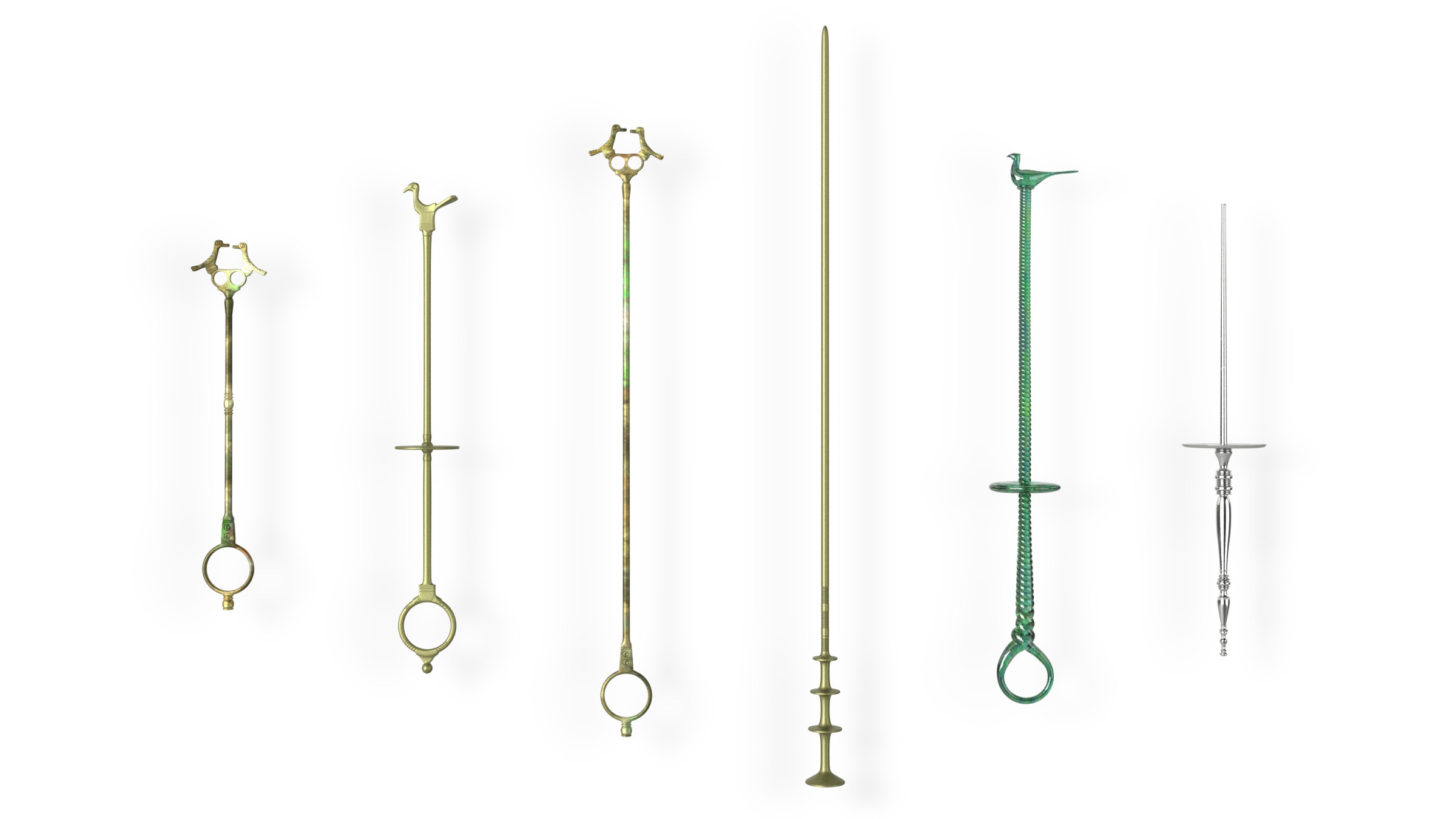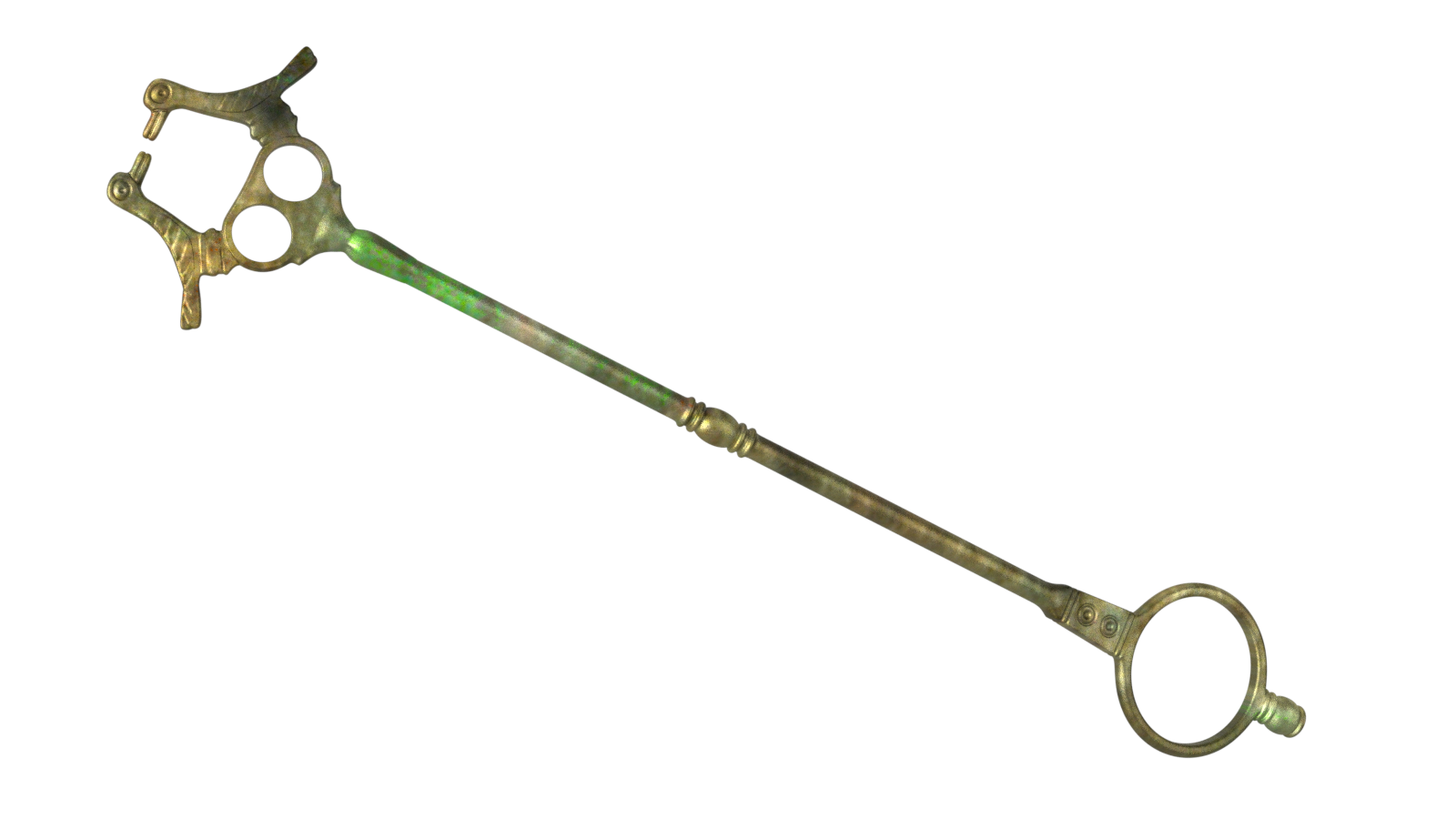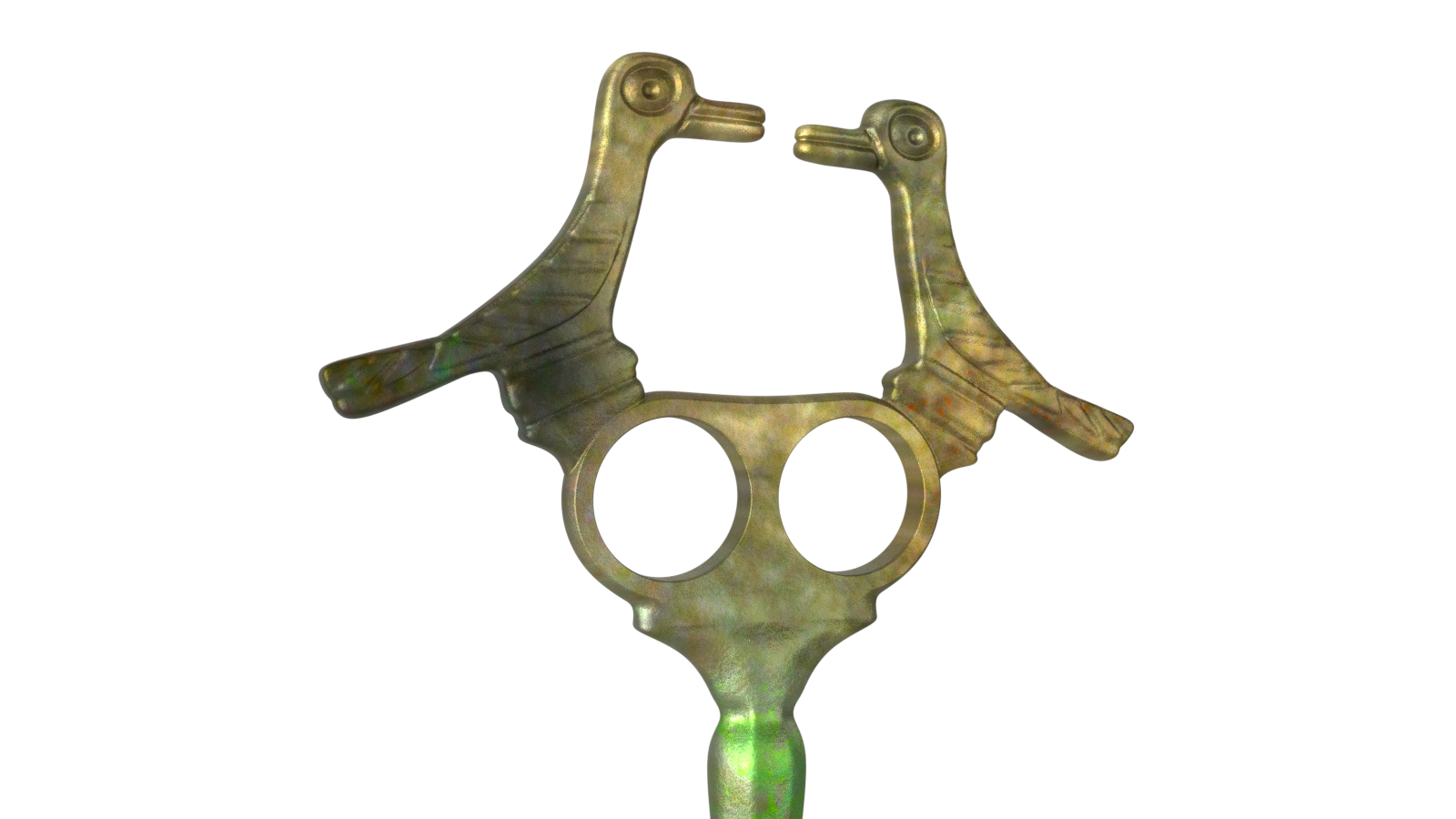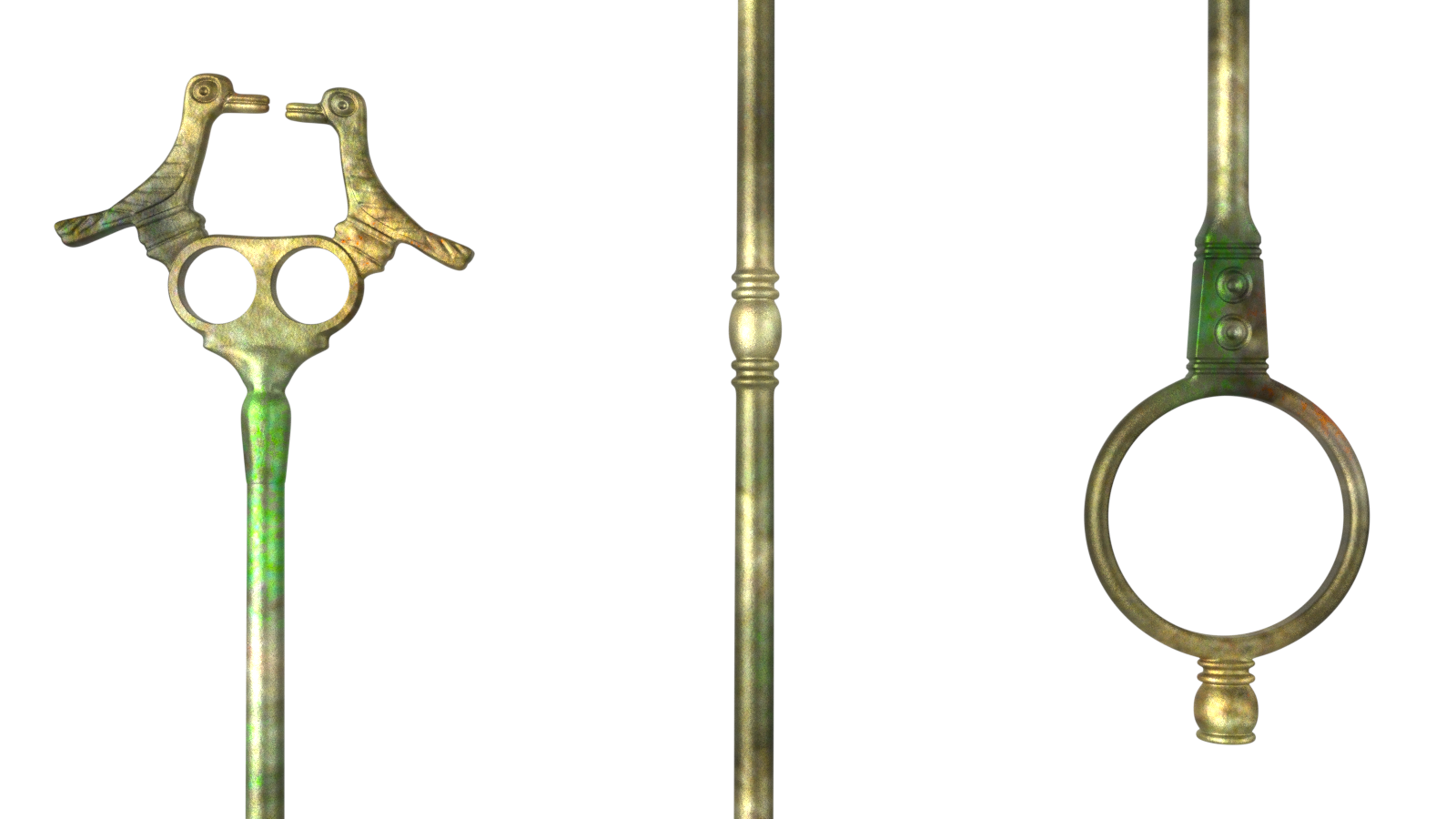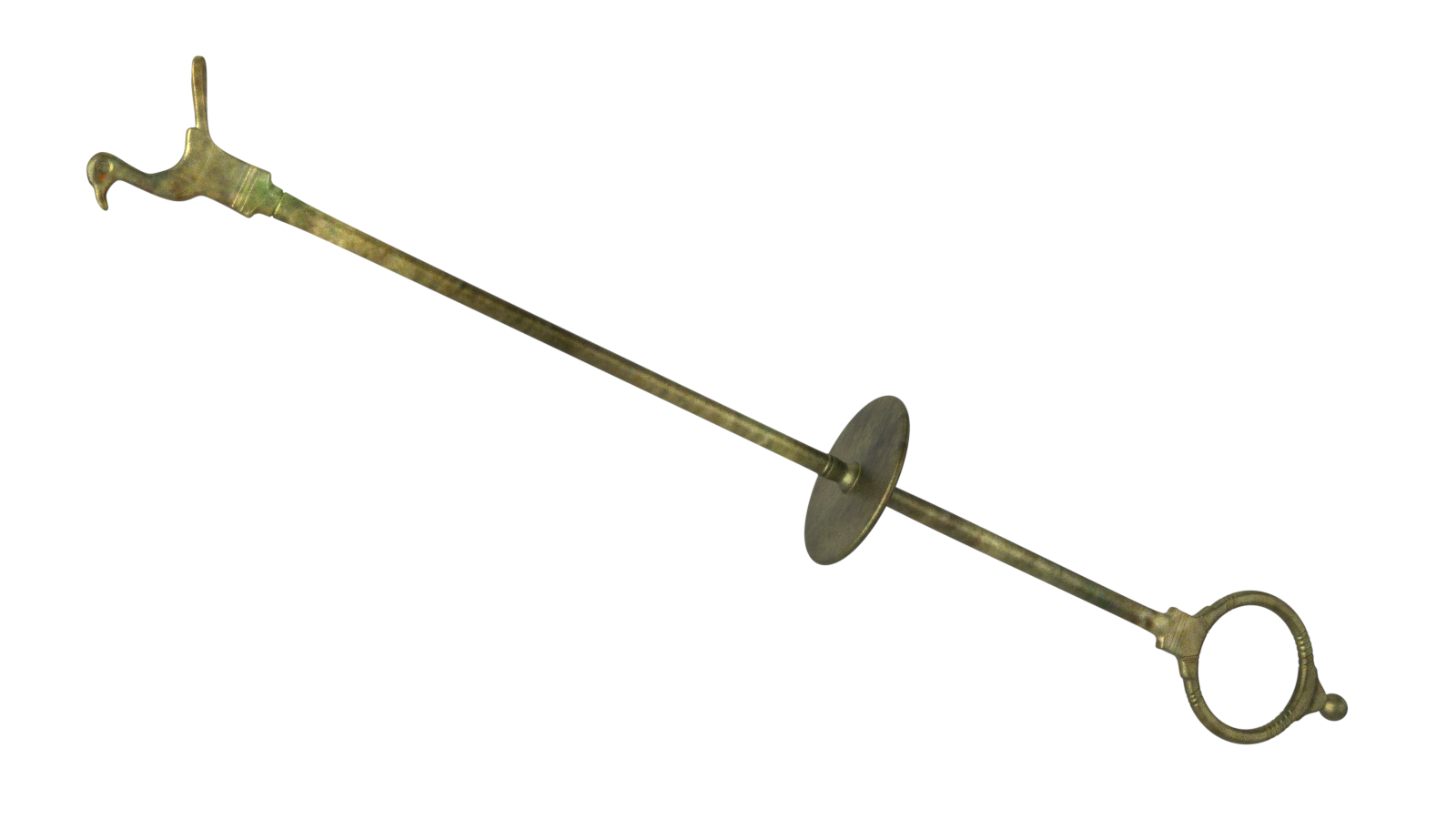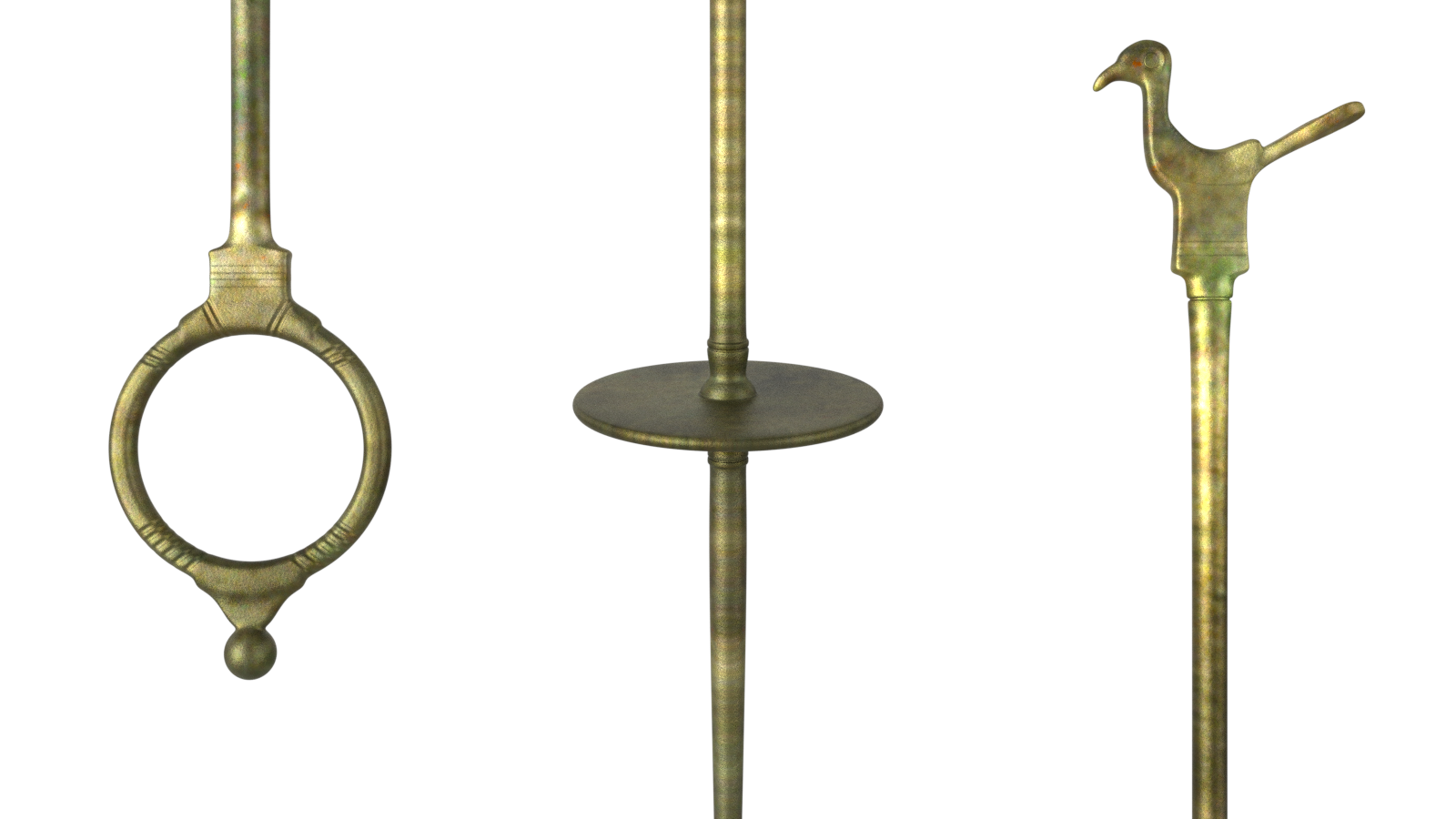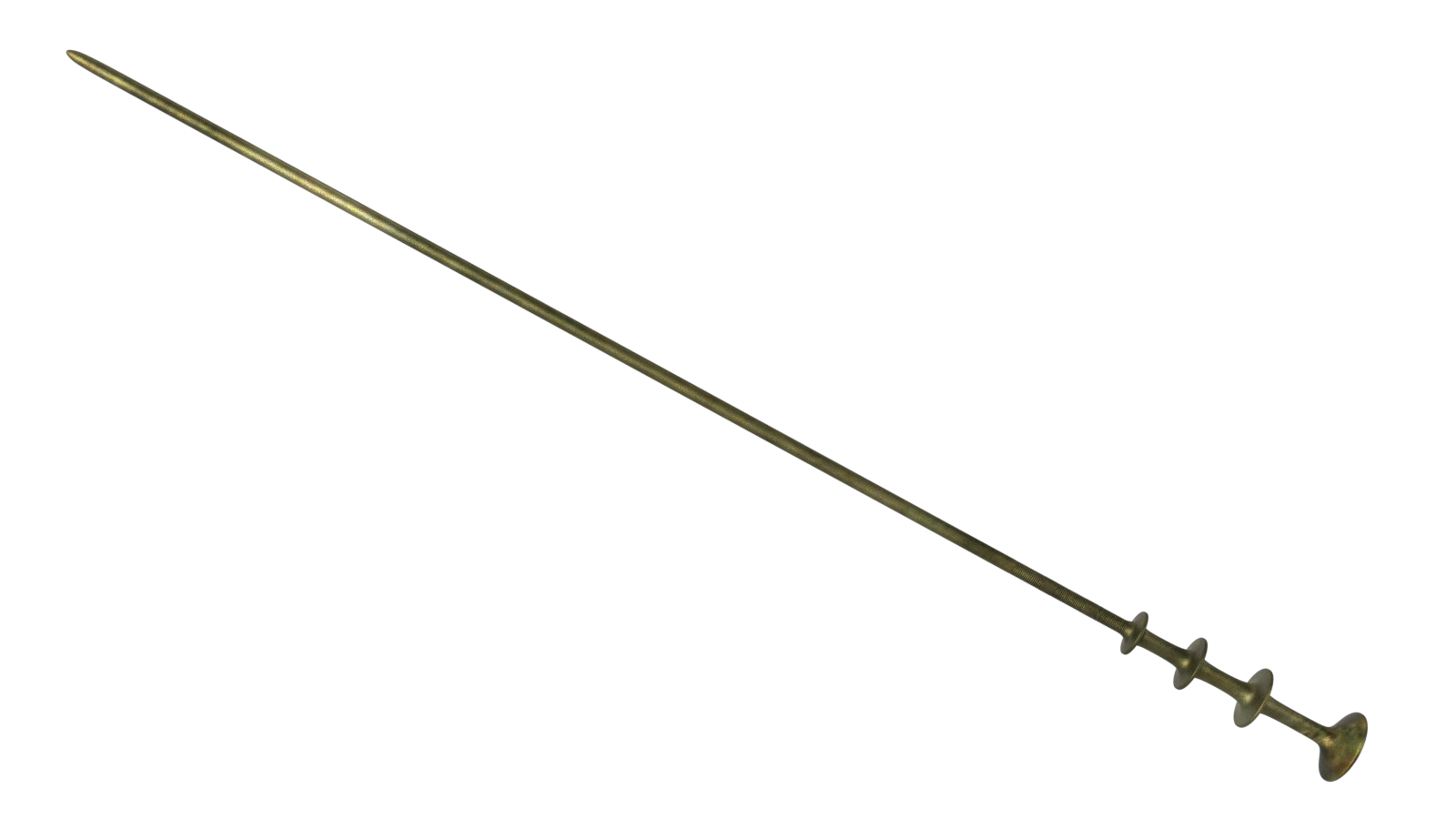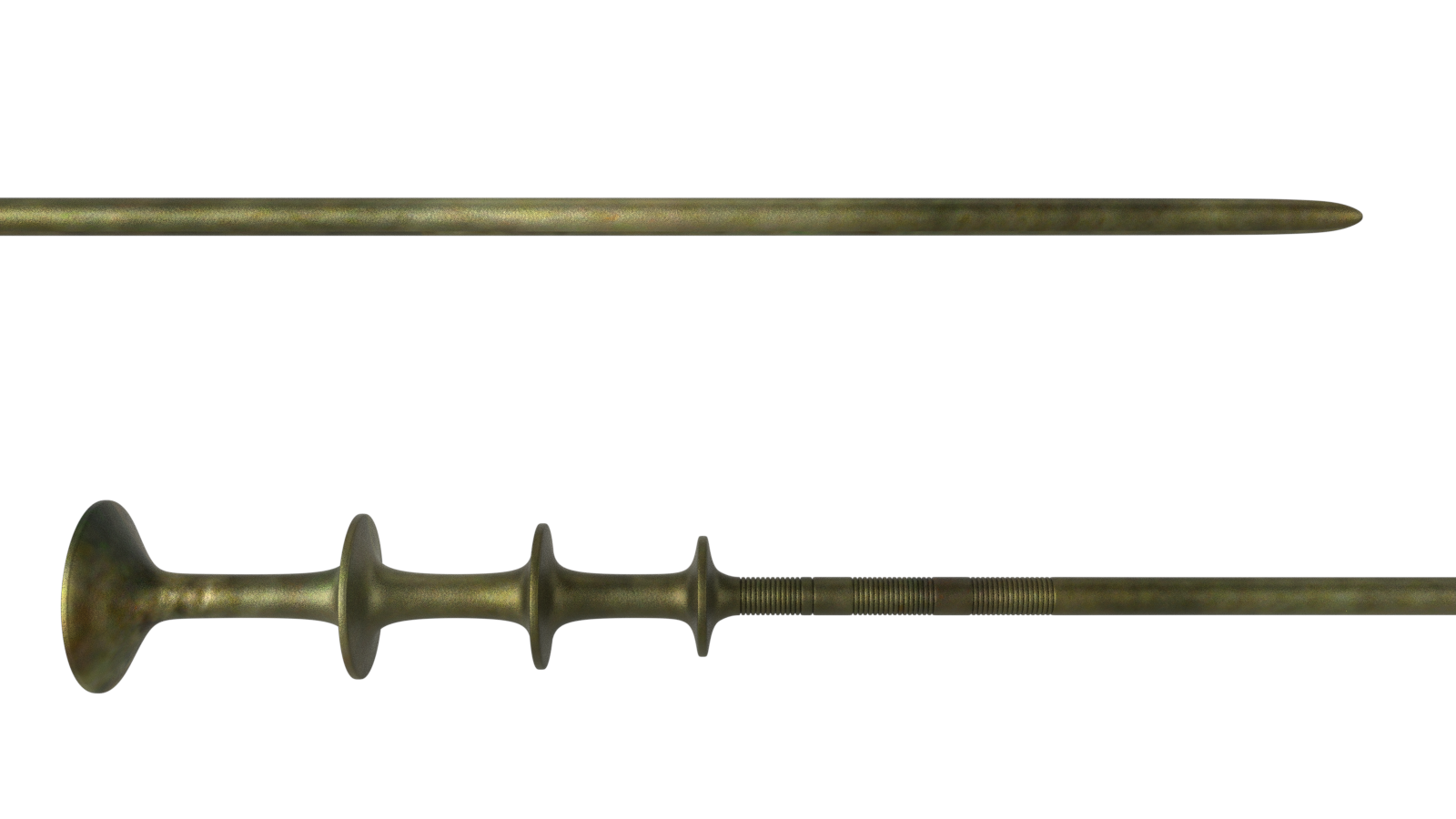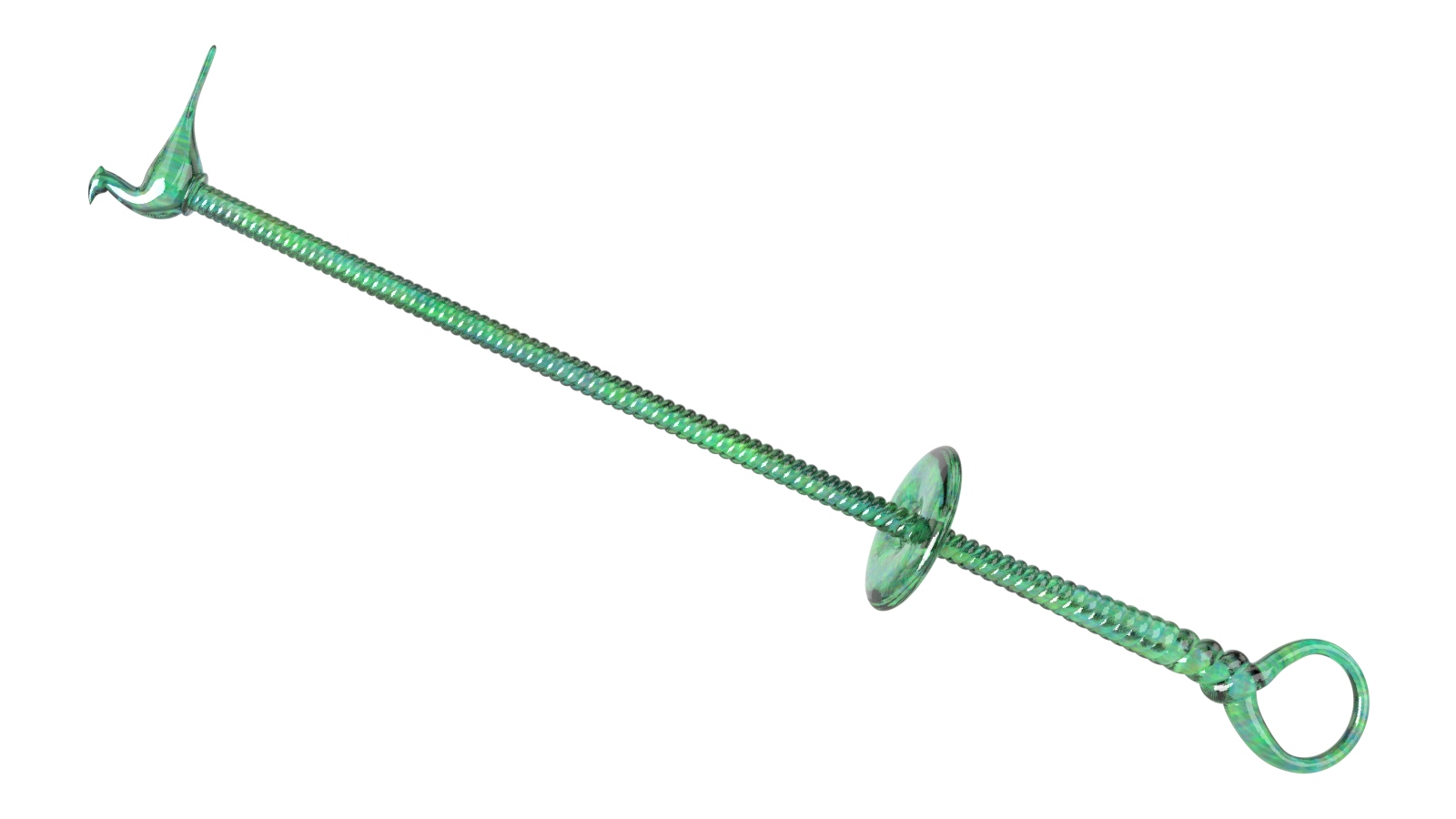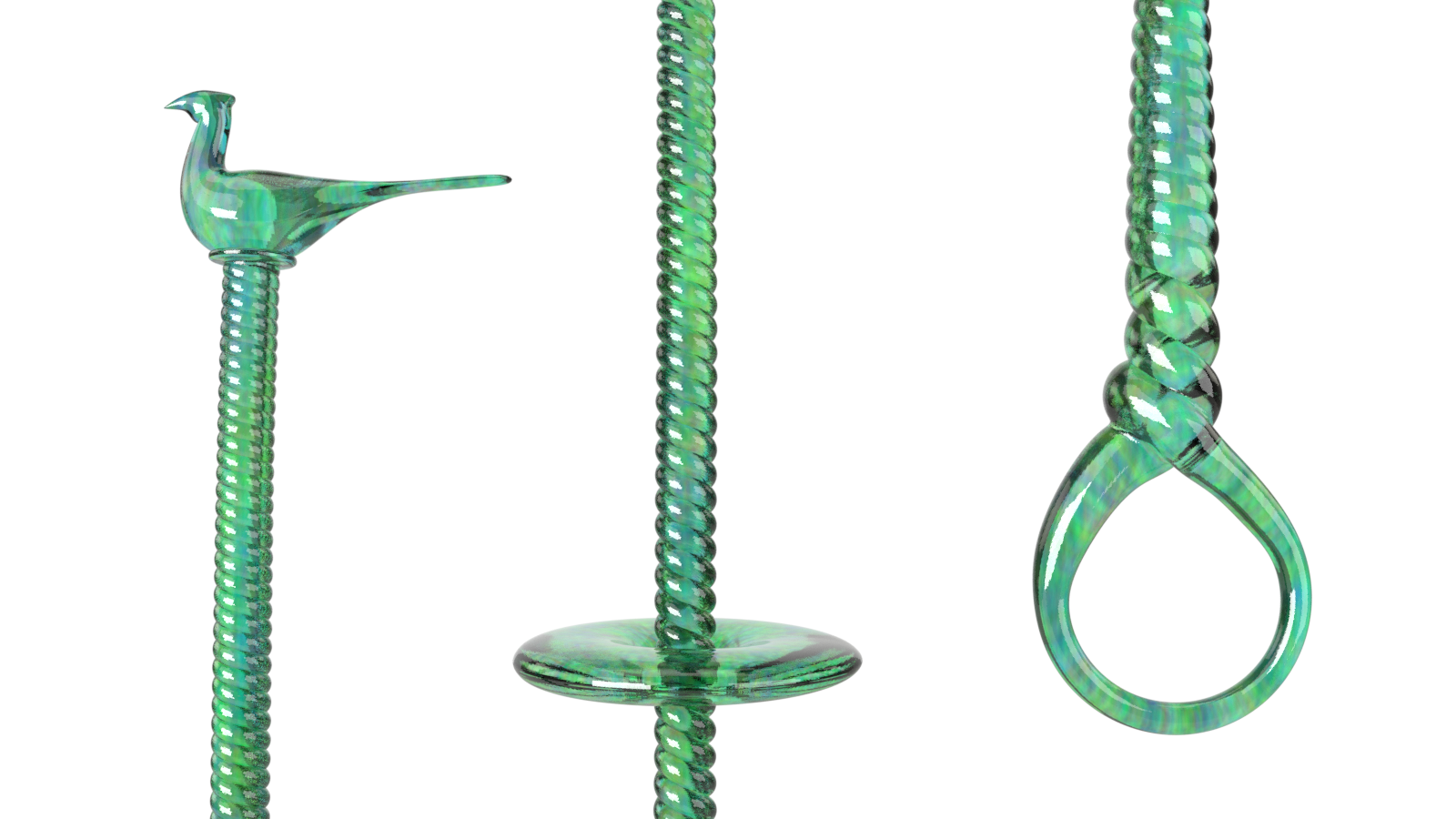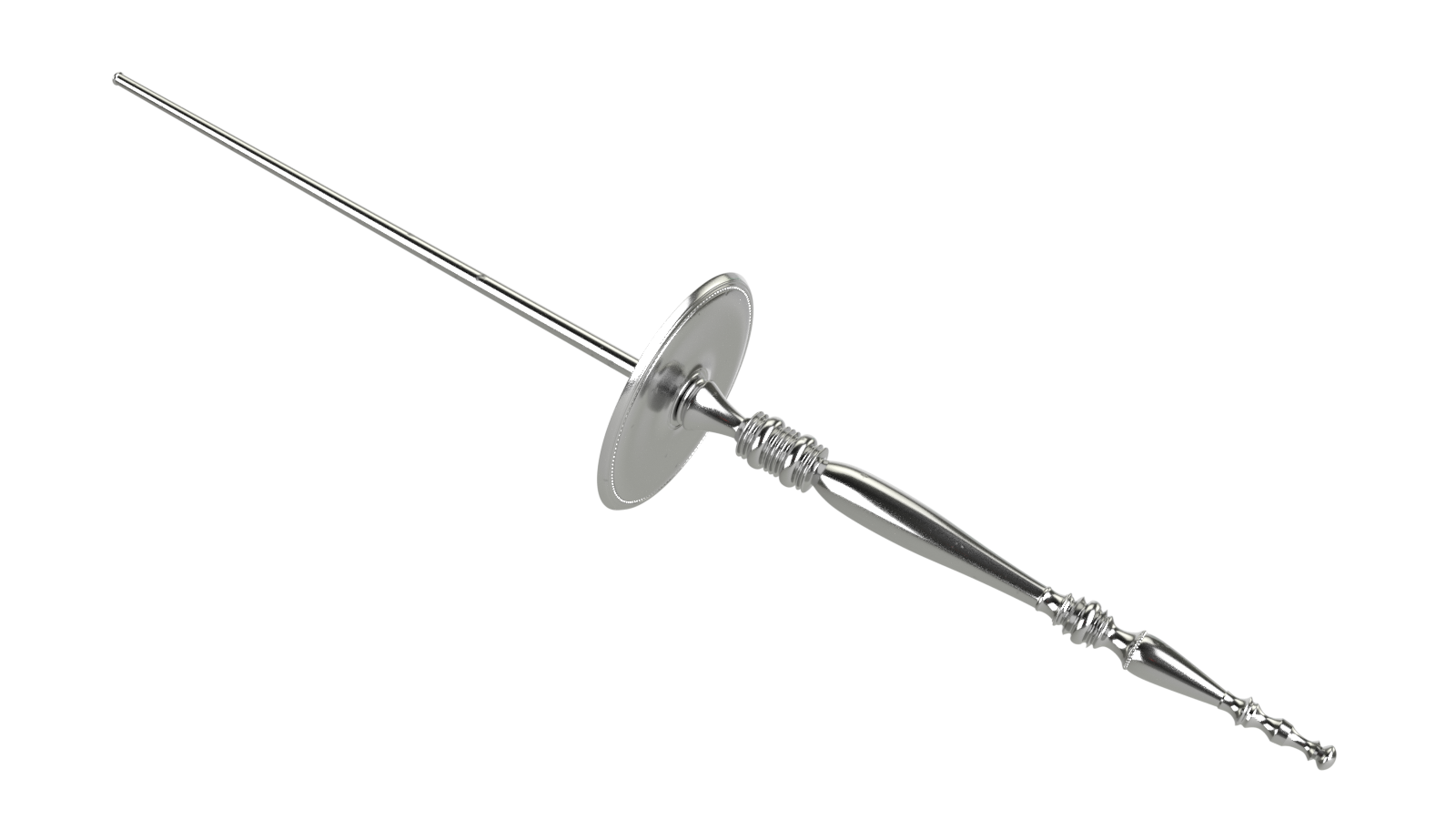WANTED: MISIDENTIFIED TEXTILE ARTIFACTS
CONCEPT REALIZATIONS’ clients are studying ancient hand-held distaffs of various materials—wood, bronze, bone, ivory, etc.—and especially spiral glass distaffs made by the Etruscans and Romans. They are asking for help finding misidentified examples of these artifacts:
“We would appreciate information about distaffs in museums and private collections. We are also looking to study some of these artifacts straight from the excavations, before they are placed in museums. Distaffs are frequently misidentified, so it is extremely difficult to search for them in electronic databases. Such artifacts are frequently described as “wine stirrers” or “stirring rods,” “dippers” or “spatulas.” They are occasionally misidentified as medical tools. Those found at archaeological excavations, instead of on the art market, however, virtually always occur in textile contexts. Please keep an eye out for them, no matter what aliases they may have: they can be hiding in plain view! Have you seen any of the following?
GLASS DISTAFFS
These artifacts are usually 20-30 cm. (8-12 inches) long; they have slender twisted glass shafts formed into a loop at one end. They often have a bird on the other end, though sometimes just a knob or flattened piece of glass. The glass distaffs have a ring at the bottom through which the spinner passes her little finger. The ring allowed the spinner to hold the distaff in a relaxed way, making it possible to spin for much longer periods of time. Some, like the examples shown here, have a whorl on the shaft. These are of particular interest as they have a special function in spinning.
BONE AND IVORY DISTAFFS
The Romans sometimes made distaffs of bone. Of particular interest are distaffs with a loop on the lower end. Bone and ivory distaffs of this type sometimes have animals carved on their tops, but many have goddesses.
METAL DISTAFFS
Of particular interest are simple bronze distaffs with a straight shaft and a fixed whorl near the midpoint. These are sometimes misidentified as spindles, but they are in fact distaffs.
Thin bronze shafts with multiple discs or whorls fixed along the shaft, each at about a finger-width distance from its neighbors, may also have been distaffs, although they are usually cataloged as cloak pins. (In spinning, such discs help to control paying out the fibers into the thread as it forms.) Clearly, information concerning exact find-spots will be needed to sort out these identification errors.
According to ancient literature, there were also distaffs made of silver and gold. We would like to know of any examples.
OTHERS
There are, of course, other forms of ancient hand-held distaffs, and we would like to learn of them too. These were of wood, metal, bone, ivory, or glass. Again, they were generally 20-30 cm (8-12 inches) in length. Some had support rings—that is, whorls or rings fixed on the shaft for the spinner to rest on top of a finger, both to support the spindle and to draft fibers over. Some had movable whorls across their shafts. There are other, similar artifacts that are often confused with distaffs, including spoons, hair pins, medical tools, and sometimes spindles. Sometimes it is hard to be sure what an artifact is without handling it, or experimenting with replicas.
We are hoping to discover of what are probably numerous distaffs in museums and private collections, and we would like, if possible, to collect statistics such as length and weight, as well as photographs. But we are also hoping to locate distaffs as the excavators discover them, in the hopes that they will be easier to study closely before they go to museums or sales. There are some key attributes, such as balance, that can be evaluated only by touch.
VITAL INFORMATION
Current location
Contact info
Accession or reference number
Place of origin (provenance)
Date of artifact
Material
Length
Weight
Photograph(s)
We are trying to understand both the evolution and the use of these surprising tools, and are happy to share what we are learning.
If you spot a distaff, or a possible distaff, please contact Dr. Elizabeth Barber at barber@oxy.edu or Kim Caulfield at kimcaulfield@mac.com
Many thanks for any time and attention you can give to this quest!”







